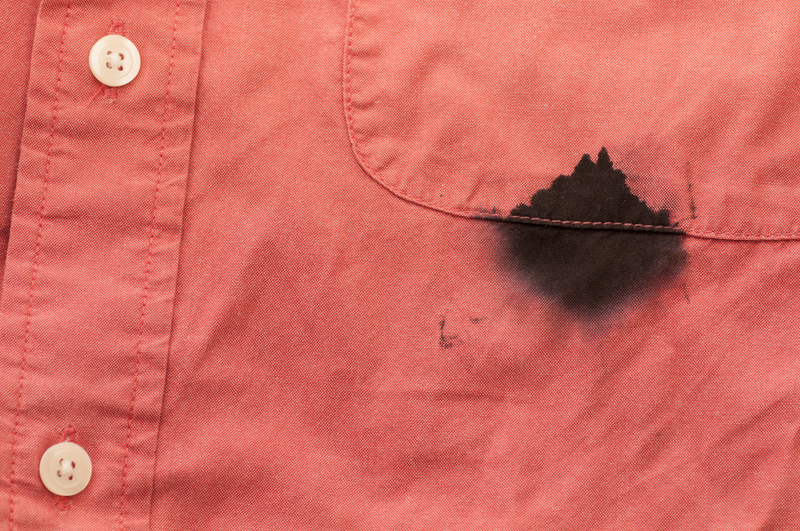Clean Your Computer Step-by-Step
Posted on 20/05/2025
Clean Your Computer Step-by-Step
Ensuring your computer is clean--both internally and externally--is vital for maintaining optimal performance and longevity. A clean computer runs faster, looks better, and is less likely to encounter hardware and software issues. In this article, we'll explore a comprehensive, step-by-step guide to clean your computer effectively.
Why Cleaning Your Computer is Important
Cleaning your computer is essential for several reasons. Dust and dirt can clog vents and fans, causing the computer to overheat. Overheating can lead to hardware failure and degradation of performance. Regular cleaning also helps to prevent the spread of germs and keeps your workspace looking professional. On the software side, a clean system runs more efficiently, boots faster, and is less likely to crash.

Tools and Materials You'll Need
Before you start cleaning, gather the following tools and materials:
- Soft, lint-free cloth
- Compressed air canister
- Isopropyl alcohol (at least 70%)
- Small brush (e.g., a toothbrush)
- Cotton swabs
- Microfiber cloth
- Vacuum cleaner with a small nozzle attachment
- Screwdriver (if you plan to open the case)
Step-by-Step Guide to Clean Your Computer
Step 1: Shut Down and Unplug Your Computer
Before you begin, make sure to shut down your computer and disconnect it from all power sources. This is crucial for avoiding any electrical mishaps or data loss.
Step 2: Clean the Exterior
Start with the exterior of your computer:
- Monitor: Use a microfiber cloth to gently wipe the screen. For stubborn spots, slightly dampen the cloth with water or a screen-cleaning solution.
- Keyboard: Turn the keyboard upside down to shake out any debris. Use a compressed air canister to dislodge crumbs and dust. Wipe each key with a cloth dampened with isopropyl alcohol.
- Mouse: Clean the mouse with a soft cloth. If it's a ball mouse, open it and clean the internal rollers.
Step 3: Open the Case (For Desktop Users)
If you have a desktop computer, unscrew the side panel to access the internal components. Laptops can also be opened, but this is generally more complicated. Consulting your manual or a professional may be advisable for laptops.
Step 4: Remove Dust from Internal Components
Once the case is open, use a compressed air canister to blow out dust from the internal components. Be mindful of the following:
- Fans: Hold the fan blades in place to prevent them from spinning while using compressed air. This avoids potential damage.
- Motherboard and RAM: Blow air in short bursts to remove dust but avoid directly touching these components.
- Power Supply: Use the compressed air canister to clean the power supply vents.
Using a small brush, gently wipe any stubborn dust off the components.
Step 5: Clean Vents and Ports
Use a vacuum cleaner with a small nozzle attachment to clean the vents and ports. This will help improve airflow and prevent overheating. A cotton swab dampened with isopropyl alcohol can be used to clean the insides of USB ports and other connection points.
Step 6: Reassemble Your Computer
After cleaning, carefully reassemble your computer by replacing the side panel or cover. Ensure that all screws and components are securely fastened.
Cleaning Your Computer Software
Cleaning your computer isn't just about physical maintenance; your software environment also needs attention. Follow these steps to optimize your computer's software:
Step 1: Uninstall Unnecessary Programs
Navigate to the Control Panel and select "Add or Remove Programs" or "Programs and Features." Remove software you no longer use. This frees up disk space and can improve system performance.
Step 2: Delete Temporary Files
Temporary files can accumulate and take up valuable disk space. Use built-in tools such as Disk Cleanup on Windows or Finder on macOS to delete these files. For Windows:
- Open the "Start" menu
- Search for "Disk Cleanup"
- Select the drive you want to clean and follow the prompts
Step 3: Update Your Operating System and Software
Keeping your operating system and software up to date is crucial for security and performance. Regular updates often include bug fixes and new features that can enhance your computer's efficiency.
Step 4: Run Antivirus and Anti-Malware Scans
Regularly scan your computer for viruses and malware using reliable antivirus software. This can help to remove malicious programs that may be slowing down your system or compromising your data.
Step 5: Defragment Your Hard Drive (Windows)
Fragmented files can slow down your computer. Use the built-in Disk Defragmenter on Windows to organize fragmented files:
- Open the "Start" menu
- Search for "Defragment and Optimize Drives"
- Select the drive you want to defragment and follow the prompts

Maintenance Tips
To keep your computer in top shape, consider these ongoing maintenance tips:
- Clean regularly: Make cleaning both the hardware and software a regular habit, such as once every three months.
- Use protective covers: Keyboard and monitor covers can help to keep dust at bay.
- Monitor system performance: Keep an eye on your system performance through Task Manager (Windows) or Activity Monitor (macOS).
- Backup important files: Regularly back up essential files to an external drive or a cloud service.
By following these steps and tips, you can ensure your computer remains clean, efficient, and long-lasting. Regular maintenance not only improves performance but also extends the lifespan of your hardware and minimizes the risk of unexpected failures.
Conclusion
Cleaning your computer, both internally and externally, is an essential practice for maintaining optimal performance and longevity. With the right tools, materials, and a systematic approach, you can effectively clean your device and keep it in excellent working condition. Regular maintenance will pay off in the long run, providing a smoother, faster, and more reliable computing experience.







